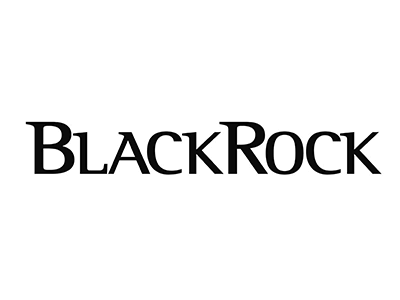BlackRock has been managing index portfolios since 1971
This fund provides a low-cost option for accessing multiple international markets through one investment
The fund aims to keep its volatility within a defined range
The fund doesn’t feature on our Wealth Shortlist of funds chosen by our analysts for their long-term performance potential
How it fits in a portfolio
The BlackRock MyMap 4 fund offers a low-cost solution for tracking a number of international markets. In doing so, the fund aims to keep its volatility within a defined range of 6-9%, measured over five years. Generally, the higher the volatility, the riskier an investment is considered to be. This volatility range is lower than what has usually been experienced from investing in company shares.
The fund is 'multi-asset' meaning it can invest in a combination of shares, bonds and alternative assets like commodities or property. This allows investors access to a variety of international markets with one investment. While the fund offers good global diversification, it has a larger weighting in companies from the US and Europe.
A mixture of assets helps spread investment risk, which could limit up and down swings in performance over the longer term, although there are no guarantees. The fund could help provide a starting point for a diversified investment portfolio or serve as a lower risk option to complement a more adventurous portfolio.
Manager
Rafael Iborra is the lead portfolio manager for the MyMap fund range and is a senior investor within BlackRock's Multi-Asset Strategies group based in London. He's part of a global team and has direct responsibility for managing a range of strategies combining active asset allocation and risk management with predominantly index and exchange traded funds (ETFs).
While Iborra is the lead, there are also two co-PMs, Christopher Ellis Thomas and Claire Gallagher, who generally manage the day-to-day fund duties. Ellis Thomas joined the investment management industry in 2004 and brings asset allocation expertise within wealth management from his tenures at Merrill Lynch and Julius Baer as well as gaining multi-asset and quantitative analyst experience at BNP Paribas. Gallagher joined BlackRock in 2021 and began her investment career in 2007 with Banca Monte dei Paschi di Siena Asset Management (Ireland). In 2008, she joined Orbis Investment Advisory Ltd as a quantitative analyst, focusing on equity and multi-asset portfolio research and management.
BlackRock's global approach allows the portfolio managers to work closely with other teams across the world, which should help drive more efficient management of their funds.
Process
The fund is part of BlackRock's MyMap range. The number "4" in the name does not directly relate to the level of risk or return, but it does help to differentiate the fund from others in the range.
The fund aims to achieve a return on investment, through a combination of growth and income, while maintaining an annual performance volatility of 6-9% over a five-year period. The team aim to keep the volatility in roughly the middle of that band at 7.5%, however there will be times when they actively choose to deviate from this if they feel the need to take more or less risk.
The fund aims to get its investment exposure by predominantly using units of other passive funds. They have target allocation percentages to different asset classes and regions which are monitored daily. The allocation percentages are typically adjusted 3 to 4 times a year, although there is no set frequency. The team have the flexibility to invest in both ETFs and index funds.
Within the fund there are a range of investments that span different geographies, sectors and asset classes. The team use their models to help them decide on the best mix of investments that will generate investment returns while remaining within their target volatility range. These decisions are made based on forward looking performance expectations, rather than based on how volatile the fund has been in the past. So, if the fund has been more or less volatile than the target range, the team are not going to change the investments in the fund just to bring the volatility back within that range. This means that investors should be aware that they may experience volatility outside of the target range.
During the last 12 months, the fund has increased the amount it invests in shares to 52% from 47% and decreased the amount it invests in bonds to 45% from 50%. The smaller part of the fund invested in alternative assets has remained the same at 3%. The key changes over the year have been the increase in the proportion of US and Japanese shares and the decrease in the proportion of UK shares and UK corporate bonds.
Within the fund, US shares currently make up the largest proportion and account for 31%, followed by developed market government bonds like treasuries and gilts which make up around 25%. In terms of the remainder of the fund, shares from other regions make up 21%, corporate bonds account for around 12%, emerging market bonds make up 7% and commodities 3%.
The team use currency hedging to convert some of the overseas currency exposure back to sterling. The prices and income of global shares and bonds can fluctuate alongside foreign currency movements, adding volatility for UK investors. By using hedging, investors could experience less extreme price movements over time, which helps smooth returns. This can be achieved using derivatives which can add risk where used.
Culture
BlackRock is currently the largest asset manager in the world. The company was founded by eight partners including current CEO Larry Fink and is known for both active and passive strategies. Employees at BlackRock are encouraged to hold shares in the company so that they are engaged with helping the company perform well and grow.
As the world's largest asset manager, and with lots of resource and knowledge under its belt, BlackRock benefits from unique access to the marketplace, which can help reduce trading costs. BlackRock is also a pioneer in the passive investment space and has a track record of innovation in this part of the investment market.
The team running this fund also works closely with various equity and risk departments across the business. We believe this adds good support and challenge on how to run their funds effectively.
ESG Integration
BlackRock was an early signatory to the PRI and has offered Environmental, Social and Governance-focused funds for several years, including through its iShares range of passive products. However, it only made a company-wide commitment to ESG in January 2020. Following that announcement, the company promised to expand its range of ESG-focused ETFs, screen some thermal coal companies from its actively managed funds and require all fund managers to consider ESG risks.
BlackRock's Investment Stewardship Team aims to vote at 100% of shareholder meetings where it has the authority to do so. The Investment Stewardship team engages with companies, in conjunction with fund managers, and the results of proxy votes can be found on the BlackRock website's ‘proxy voting search' function. The firm also outlines its work on voting and engagement in annual and quarterly Stewardship reports.
The firm has courted controversy in recent years for failing to put its significant weight behind shareholder resolutions aimed at tackling climate change. It responded by committing to be more transparent on its voting activity and providing rationales for key votes. In 2024, Blackrock announced that its US arm would step back from the Climate Action 100+ collective engagement initiative, citing legal considerations, although it suggested its international arm would remain a member.
The Blackrock MyMap 4 fund is not managed to an ESG objective but does invest in some funds that are. The team may choose to invest in a fund that includes specific ESG objectives where they believe there is a risk-return advantage to doing so, and subject to meeting all other constraints of running the fund, such as costs.
BlackRock have previously indicated that the fund is likely to see further ESG integration over time but there have been no developments in the past year. A few other funds in the range are already managed specifically in line with an ESG objective, and we would welcome further innovation from BlackRock on this topic in respect of this fund.
Cost
The Class D units of the fund carry an ongoing annual fund charge of 0.17%. Our platform charge of up to 0.45% per annum also applies, except in the HL Junior ISA, where no platform fee applies.
Performance
The fund is not constrained by an official benchmark, and instead focuses on delivering growth over the long term within a predefined volatility range. The fund's success can therefore be judged on whether BlackRock have kept volatility within the range over five years.
This fund doesn’t have a five-year track record, so we are unable to make a formal assessment of its performance against the stated objective. As of the end of February 2024, the fund’s annualised volatility since launch was 7.98% which is within the targeted range.
Over the last 12 months, the fund has returned 9.23%*. US, Japanese and European (ex UK) shares were the main contributors to performance over the year, as well as US high yield corporate bonds. On the other hand, medium-term US treasury bonds, global clean energy and commodities detracted from performance. Remember, past performance isn't a guide to future returns.
The fund uses complex models to estimate the future risks and returns of different types of investment. Over time, the fund's managers will change its asset allocation so that future returns are expected to fall within the target volatility range. Despite the capability that BlackRock have, models can never be seen as a definitive guide to future returns, and investment performance can be impacted by factors outside of the manager's control.
Multi-asset funds invest in a range of assets which should help to reduce the risk of being over-concentrated in a single type of security like shares. In 2022, bonds and shares both fell by a similar amount and this reduced the benefit a diversified portfolio is expected to deliver. As interest rates have stabilised over the last year, shares and bonds have reverted back to being less correlated, which is more in line with what we have seen historically. This should help a diversified portfolio spread risk and smooth returns through different market conditions, although this is not guaranteed.
Annual percentage growth
Feb 19 – Feb 20 | Feb 20 – Feb 21 | Feb 21 – Feb 22 | Feb 22 – Feb 23 | Feb 23 – Feb 24 | |
|---|---|---|---|---|---|
BlackRock MyMap 4 | N/A%** | 9.20% | 4.58% | -5.51% | 9.23% |


